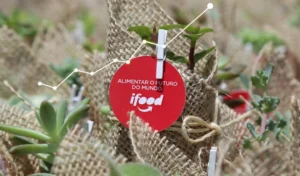By 2030, the majority of the world's population (60%) will live in cities. In São Paulo alone, there will be almost 24 million inhabitants, points out the UN Department of Economic and Social Affairs (United Nations). How can we live harmoniously in these urban environments?
This is the challenge proposed by the UN Agenda 2030, which identifies the construction of sustainable cities and communities as one of its Development Goals for the next decade. Making a city sustainable, for the organization, means making it more inclusive and safe, being a place where the entire society can live in peace.
iFood strongly believes in this vision. So much so that, in our ecosystem, the main objective is to benefit everyone involved in this community. Our employees, the Foodlovers, find support to create and be themselves. Delivery partners have support points, education programs and subsidies to work safely. All this because we understand that this coexistence is only legal when everyone wins.
Here, we believe that delivery, our business, can also be used for positive social impact. Big cities are the best markets for us, but they also present the biggest challenges to achieving the goal of building a sustainable city together.
To get there, many points are being rethought, such as mobility, solid waste management and, above all, food security. On our side, we are always thinking about new solutions, such as offering electric bicycles as non-polluting means of making deliveries and empower our delivery partners to make traffic safer.
To reduce waste generation, we started offering Option to not order cutlery, plastic cups and straws with your food – and we are researching new packaging materials, alternatives to plastic and Styrofoam.
All this to achieve, by 2025, two important goals: eliminating pollution generated by plastic disposal and being carbon neutral, with 50% of deliveries made by sustainable vehicles (which do not emit CO2).
We also believe that city space can be better used to combat food insecurity through urban gardens, which transform idle areas into producers of fresh food that must reach the people who need it most. At our headquarters, in Osasco (SP), the urban garden donates 1.7 tons of food per month to the city's Food Bank. Urban gardens also help reduce air pollution and ease traffic, as transport routes are much shorter in the city.
This is just the beginning. There is still a long way to go before we have more sustainable cities in 2030. The big question is how we are going to pave the way there.


